Related Research Articles

Giovanni Battista Draghi, usually referred to as Giovanni Battista Pergolesi, was an Italian Baroque composer, violinist, and organist, leading exponent of the Baroque; he is considered one of the greatest Italian musicians of the first half of the 18th century and one of the most important representatives of the Neapolitan school.
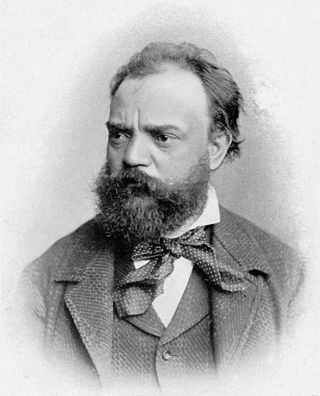
Antonín Leopold Dvořák was a Czech composer. He frequently employed rhythms and other aspects of the folk music of Moravia and his native Bohemia, following the Romantic-era nationalist example of his predecessor Bedřich Smetana. Dvořák's style has been described as "the fullest recreation of a national idiom with that of the symphonic tradition, absorbing folk influences and finding effective ways of using them," and Dvořák has been described as "arguably the most versatile... composer of his time".
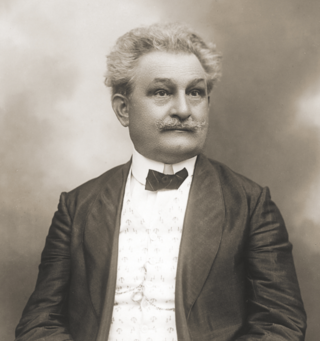
Leoš Janáček was a Czech composer, music theorist, folklorist, publicist, and teacher. He was inspired by Moravian and other Slavic music, including Eastern European folk music, to create an original, modern musical style.
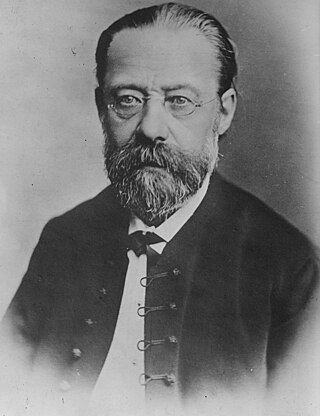
Bedřich Smetana was a Czech composer who pioneered the development of a musical style that became closely identified with his people's aspirations to a cultural and political "revival". He has been regarded in his homeland as the father of Czech music. Internationally he is best known for his 1866 opera The Bartered Bride and for the symphonic cycle Má vlast, which portrays the history, legends and landscape of the composer's native Bohemia. It contains the famous symphonic poem "Vltava", also popularly known by its German name "Die Moldau".

Bohuslav Jan Martinů was a Czech composer of modern classical music. He wrote 6 symphonies, 15 operas, 14 ballet scores and a large body of orchestral, chamber, vocal and instrumental works. He became a violinist in the Czech Philharmonic Orchestra, and briefly studied under Czech composer and violinist Josef Suk. After leaving Czechoslovakia in 1923 for Paris, Martinů deliberately withdrew from the Romantic style in which he had been trained. During the 1920s he experimented with modern French stylistic developments, exemplified by his orchestral works Half-time and La Bagarre. He also adopted jazz idioms, for instance in his Kitchen Revue.

Vítězslav Augustín Rudolf Novák was a Czech composer and academic teacher at the Prague Conservatory. Stylistically, he was part of the neo-romantic tradition, and his music is considered an important example of Czech modernism. He worked towards a strong Czech identity in culture after the country became independent in 1918. His compositions include operas and orchestral works.
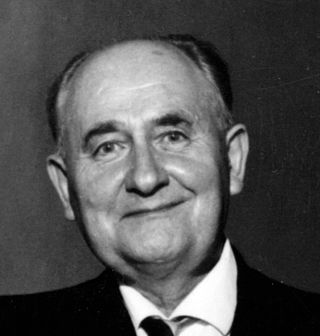
Alois Hába was a Czech composer, music theorist and teacher. He belongs to the important discoverers in modern classical music, and major composers of microtonal music, especially using the quarter-tone scale, though he used others such as sixth-tones, fifth-tones, and twelfth-tones. From the other microtonal conceptions, he discussed a "three-quarter tone" system in his theoretical works but he used scales in this tuning in sections of some of his compositions. In his prolific career, Hába composed three operas, an enormous collection of chamber music including 16 string quartets, piano, organ and choral pieces, some orchestral works and songs. He also had special keyboard and woodwind instruments constructed that were capable of playing quarter-tone scales.
Adam Michna z Otradovic, or also Adam Václav Michna z Otradovic – literally Adam Michna of Otradovice, was a Czech Catholic poet, composer, hymn writer, organist and choir leader of the early Baroque era. He is also known in simplified form as Adam Michna and during his life as Adamus Wenceslaus Michna de Ottradowicz. He was the most important Czech composer and poet of the early Baroque who initiated the development of Czech art in that era and became a significant inspiration for Czech artists of future generations.
Jan Dismas Zelenka, baptised Jan Lukáš Zelenka was a Czech composer and musician of the Baroque period. His music is admired for its harmonic inventiveness and mastery of counterpoint.
Petr Eben was a Czech composer of modern and contemporary classical music, and an organist and choirmaster.
František Xaver Brixi was a Czech classical composer of the 18th century. His first name is sometimes given by reference works in its Germanic form, Franz.

Bohuslav Matěj Černohorský was a Czech composer, organist and teacher of the baroque era. He wrote among other works motets, other choral works and organ solo works.

Josef Seger was a Czech organist, composer, and educator. After graduating in philosophy from the Charles University in Prague and studying music under Bohuslav Matěj Černohorský, Jan Zach, and others, Seger became organist of two churches in Prague and remained there until his death.

Simon Bar Jona Madelka or Šimon Bariona Oppollensis was a Czech composer. In addition to being a composer, he was also a member of the butcher's guild in the Plzeň. Madelka published two music collections.
Felix Benda was a Bohemian composer and organist. He was not a member of the Benda musical family.

Vlkava is a municipality and village in Mladá Boleslav District in the Central Bohemian Region of the Czech Republic. It has about 500 inhabitants.

Jan Rychlík was a Czech composer and music theorist. He was one of the most important exponents of the Czech New Music in the 1950s and 1960s.
Jan Trojan Turnovský was a Czech Renaissance composer. He became known in the second half of the 1570s. His compositions are included in the most important sources of Utraquist polyphony.

Music of the Czech Republic comprises the musical traditions of that state or the historical entities of which it is compound, i.e. the Czech lands. Czech music also constitutes a substantial part of the music culture of its direct predecessor, Czechoslovakia.
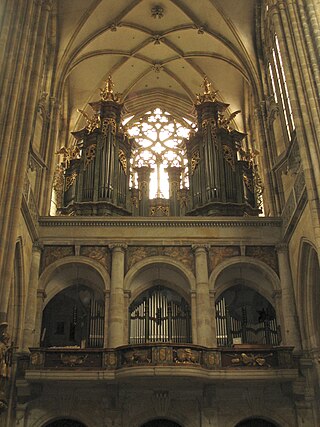
The Missa brevis in C is a composition by František Xaver Brixi. The missa brevis is a setting of the Tridentine Mass for SATB soloists and choir, trumpets, timpani, strings and organ. Manuscripts were held in several monasteries in today's Czech Republic, Austria and Germany. It was published by Dr. J. Butz in 2004.
References
- ↑ Brixi, Šimon; Straka, Vincenc; Bělský, Vratislav (1997). Magnificat. Partitura. Prague: Editio Supraphon. p. VIII. ISMN M 2600-00081-0
- ↑ Vysloužil, Jiří (2001). Hudební slovník pro každého II (in Czech). Vizovice: Lípa. ISBN 80-86093-23-9., p. 54